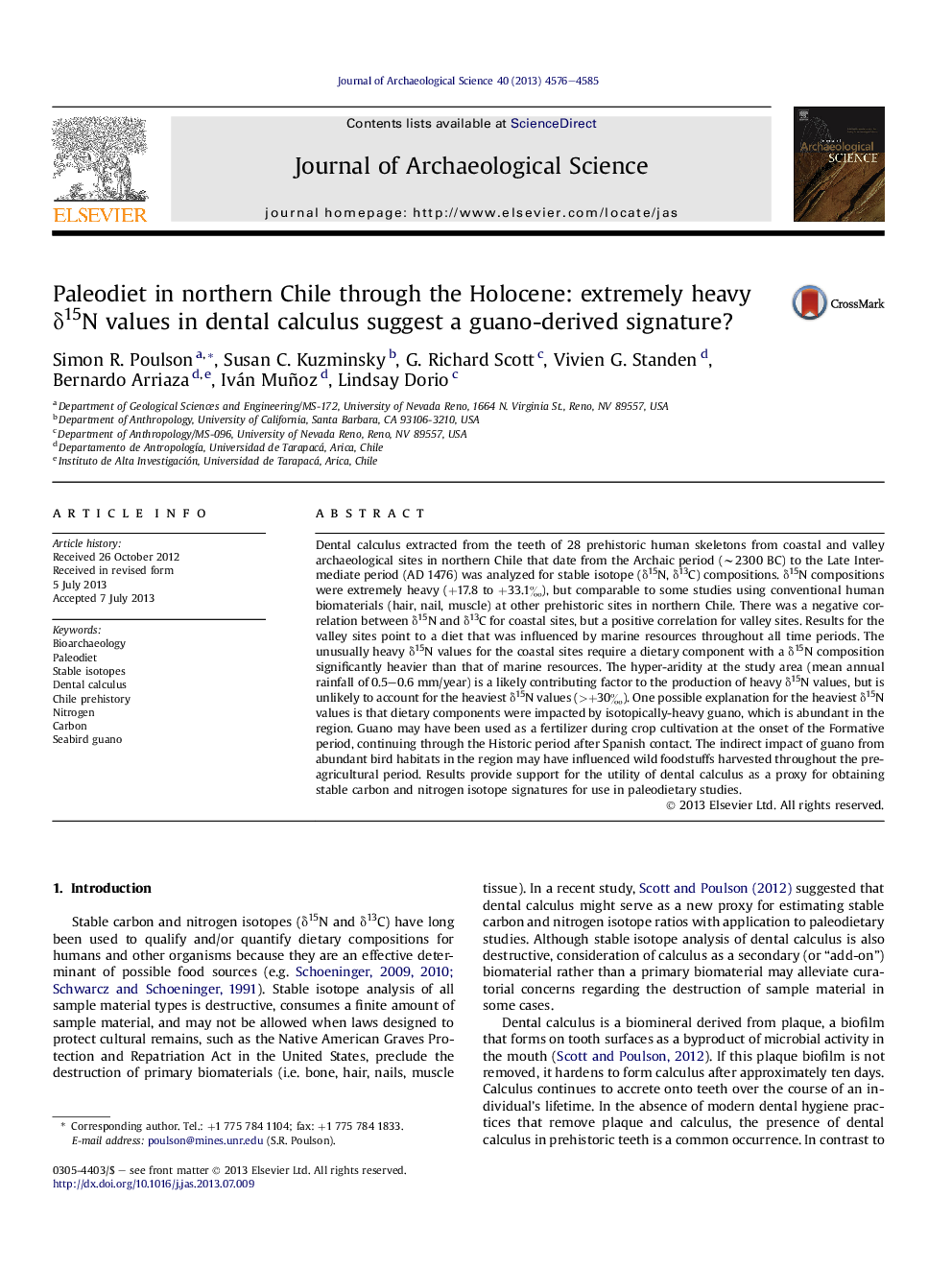| کد مقاله | کد نشریه | سال انتشار | مقاله انگلیسی | نسخه تمام متن |
|---|---|---|---|---|
| 7444036 | 1483920 | 2013 | 10 صفحه PDF | دانلود رایگان |
عنوان انگلیسی مقاله ISI
Paleodiet in northern Chile through the Holocene: extremely heavy δ15N values in dental calculus suggest a guano-derived signature?
دانلود مقاله + سفارش ترجمه
دانلود مقاله ISI انگلیسی
رایگان برای ایرانیان
کلمات کلیدی
موضوعات مرتبط
مهندسی و علوم پایه
مهندسی مواد
دانش مواد (عمومی)
پیش نمایش صفحه اول مقاله

چکیده انگلیسی
Dental calculus extracted from the teeth of 28 prehistoric human skeletons from coastal and valley archaeological sites in northern Chile that date from the Archaic period (â¼2300 BC) to the Late Intermediate period (AD 1476) was analyzed for stable isotope (δ15N, δ13C) compositions. δ15N compositions were extremely heavy (+17.8 to +33.1â°), but comparable to some studies using conventional human biomaterials (hair, nail, muscle) at other prehistoric sites in northern Chile. There was a negative correlation between δ15N and δ13C for coastal sites, but a positive correlation for valley sites. Results for the valley sites point to a diet that was influenced by marine resources throughout all time periods. The unusually heavy δ15N values for the coastal sites require a dietary component with a δ15N composition significantly heavier than that of marine resources. The hyper-aridity at the study area (mean annual rainfall of 0.5-0.6 mm/year) is a likely contributing factor to the production of heavy δ15N values, but is unlikely to account for the heaviest δ15N values (>+30â°). One possible explanation for the heaviest δ15N values is that dietary components were impacted by isotopically-heavy guano, which is abundant in the region. Guano may have been used as a fertilizer during crop cultivation at the onset of the Formative period, continuing through the Historic period after Spanish contact. The indirect impact of guano from abundant bird habitats in the region may have influenced wild foodstuffs harvested throughout the pre-agricultural period. Results provide support for the utility of dental calculus as a proxy for obtaining stable carbon and nitrogen isotope signatures for use in paleodietary studies.
ناشر
Database: Elsevier - ScienceDirect (ساینس دایرکت)
Journal: Journal of Archaeological Science - Volume 40, Issue 12, December 2013, Pages 4576-4585
Journal: Journal of Archaeological Science - Volume 40, Issue 12, December 2013, Pages 4576-4585
نویسندگان
Simon R. Poulson, Susan C. Kuzminsky, G. Richard Scott, Vivien G. Standen, Bernardo Arriaza, Iván Muñoz, Lindsay Dorio,